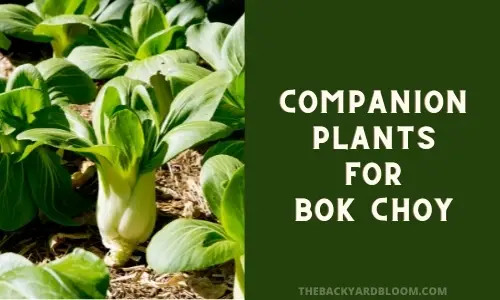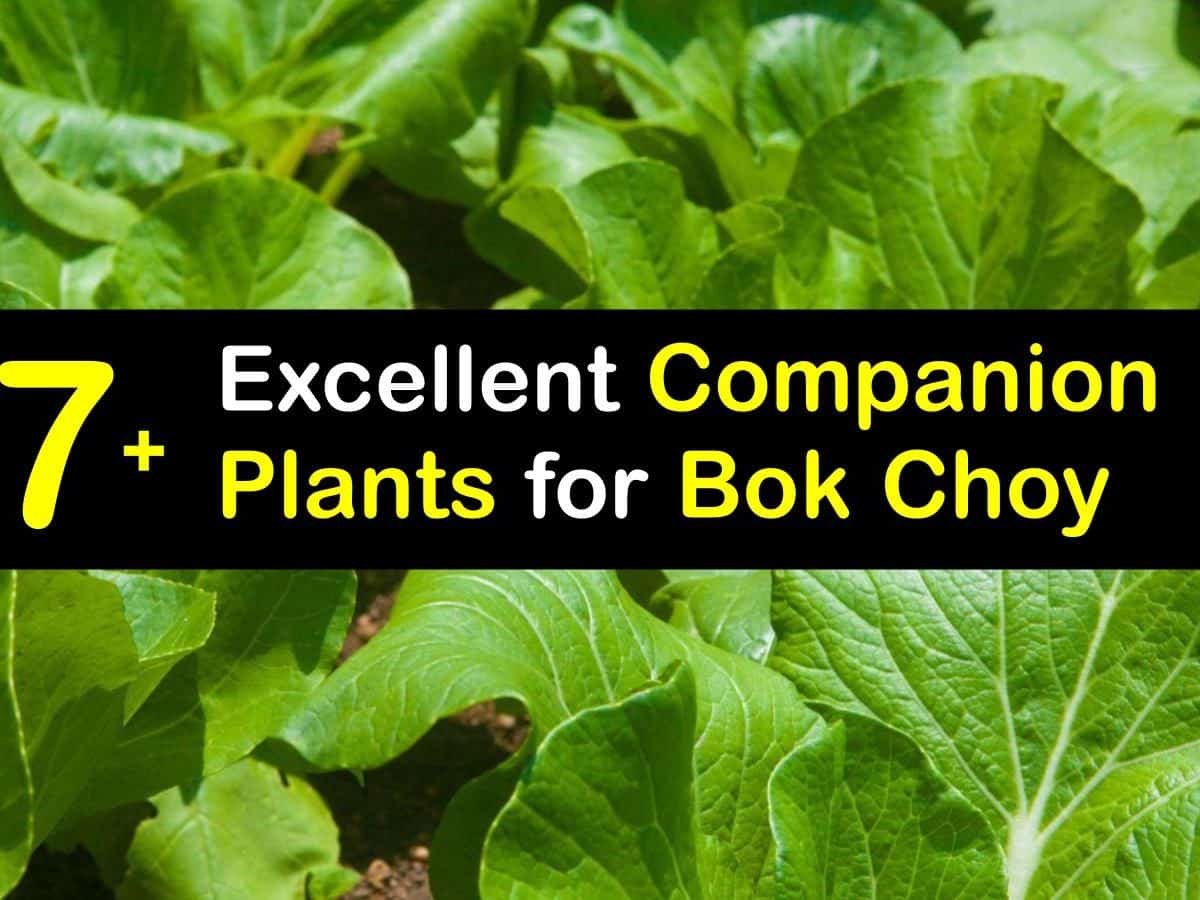The Ultimate Guide To Companion Planting For Pak Choy
The Ultimate Guide to Companion Planting for Pak Choy
Pak choy is a delicious and versatile leafy green that is easy to grow. It is a member of the Brassica family, which also includes broccoli, cauliflower, and cabbage. Pak choy is a cool-season crop that can be grown in spring, fall, or winter.
One of the best ways to improve the growth and productivity of pak choy is to use companion planting. Companion planting is the practice of planting certain types of plants together to benefit each other. There are many different companion plants that can be beneficial for pak choy, but some of the best include:
- Onions: Onions release sulfur compounds that help to repel pests, such as aphids and cabbage moths.
- Peas: Peas are nitrogen-fixing plants, which means that they can help to improve the nitrogen content of the soil. This is beneficial for pak choy, as it is a heavy feeder.
- Nasturtiums: Nasturtiums attract beneficial insects, such as ladybugs and lacewings, which help to control pests.
- Marigolds: Marigolds also attract beneficial insects, and they also help to repel nematodes.
- Herbs: Many herbs, such as mint, rosemary, and sage, can help to repel pests and improve the flavor of pak choy.
In addition to these specific companion plants, there are a few general principles that can be followed when companion planting pak choy. First, it is important to avoid planting pak choy near other members of the Brassica family. This is because these plants can compete for resources and be susceptible to the same pests and diseases. Second, it is important to plant pak choy in a sunny location with well-drained soil. Pak choy does not tolerate hot, dry conditions, so it is important to water it regularly.
By following these tips, you can help to ensure that your pak choy plants thrive. Companion planting is a great way to improve the growth and productivity of your pak choy plants, and it can also help to attract beneficial insects and improve the flavor of your harvest.
[MAIN CONTENT]
Here are some additional tips for companion planting pak choy:
- Plant pak choy near tall plants, such as tomatoes or corn, to provide shade from the hot sun.
- Mulch around pak choy plants to help keep the soil moist and suppress weeds.
- Fertilize pak choy plants regularly with a balanced fertilizer.
- Harvest pak choy when the leaves are young and tender.
Here are some of the pests and diseases that can affect pak choy:
- Aphids: Aphids are small, sap-sucking insects that can damage pak choy plants. They can be controlled with insecticidal soap or neem oil.
- Cabbage moths: Cabbage moths are a type of butterfly that can lay eggs on pak choy plants. The larvae of these moths can cause significant damage to the plants. They can be controlled with insecticidal soap or neem oil.
- Downy mildew: Downy mildew is a fungal disease that can cause yellowing and wilting of pak choy leaves. It can be controlled by planting pak choy in a well-drained location and avoiding overhead watering.
Conclusion
Pak choy is a delicious and versatile vegetable that is easy to grow. By following the tips in this guide, you can help to ensure that your pak choy plants thrive. Companion planting is a great way to improve the growth and productivity of your pak choy plants, and it can also help to attract beneficial insects and improve the flavor of your harvest.
Pak choi is a delicious and nutritious vegetable that is easy to grow. But did you know that there are certain plants that can help pak choi grow even better? These are called companion plants, and they can provide a number of benefits, such as:
- Attracting beneficial insects. Some companion plants, such as nasturtiums and marigolds, attract beneficial insects that help to control pests.
- Reducing the risk of disease. Other companion plants, such as garlic and onions, can help to reduce the risk of disease by releasing chemicals that deter pests and pathogens.
- Improving soil quality. Some companion plants, such as legumes, can fix nitrogen in the soil, which can benefit pak choi and other plants.
If you're interested in learning more about companion plants for pak choi, I recommend visiting Gardenia Inspiration. This website has a wealth of information about companion planting, including a list of specific plants that are good companions for pak choi.
FAQ of companion plants for pak choi
Question 1: What are some good companion plants for pak choi?
Answer: Some good companion plants for pak choi include:
- Beets. Beets help to suppress weeds and improve the soil structure.
- Bush beans. Bush beans fix nitrogen in the soil, which is beneficial to pak choi.
- Carrots. Carrots help to repel pests, such as carrot fly.
- Celery. Celery helps to attract beneficial insects, such as ladybugs.
- Cucumber. Cucumber helps to shade pak choi from the hot sun.
- Dill. Dill helps to repel pests, such as aphids.
- Garlic and onions. Garlic and onions help to repel pests, such as aphids and cabbage moths.
- Potatoes. Potatoes help to suppress weeds and improve the soil structure.
Question 2: What are some bad companion plants for pak choi?
Answer: Some bad companion plants for pak choi include:
- Broccoli. Broccoli is a member of the Brassica family, and planting it near pak choi can cause pak choi to bolt.
- Cabbage. Cabbage is a member of the Brassica family, and planting it near pak choi can cause pak choi to bolt.
- Cauliflower. Cauliflower is a member of the Brassica family, and planting it near pak choi can cause pak choi to bolt.
- Kale. Kale is a member of the Brassica family, and planting it near pak choi can cause pak choi to bolt.
- Peppers. Peppers are related to tomatoes, and planting them near pak choi can cause pak choi to bolt.
- Tomatoes. Tomatoes are related to peppers, and planting them near pak choi can cause pak choi to bolt.
Question 3: Why is it important to plant companion plants with pak choi?
Answer: Companion planting is the practice of planting different types of plants together to benefit each other. When you plant companion plants with pak choi, you can help to improve the growth and health of your pak choi plants. Companion plants can also help to suppress weeds, attract beneficial insects, and repel pests.
Question 4: How do I plant companion plants with pak choi?
Answer: When you plant companion plants with pak choi, it is important to choose plants that will benefit each other. You should also plant the companion plants in a way that will allow them to thrive. For example, you may want to plant bush beans between your pak choi plants to help them fix nitrogen in the soil.
Question 5: Where can I find more information about companion planting with pak choi?
Answer: There are many resources available online and in libraries that can provide you with more information about companion planting with pak choi. Some good resources include:
- The Vegetable Gardener's Companion by Carol Deppe
- The Garden Seed Book by Mel Bartholomew
- Carrots Love Tomatoes by Louise Riotte
- The Rustic Garden by Niki Jabbour
- The Edible Garden by Barbara Damrosch
Image of companion plants for pak choi
5 different images of companion plants for pak choi from Pinterest:
Beet
 Beet and pak choi are both cool-season crops that can be planted together in the same garden bed. Beets help to suppress weeds and attract beneficial insects, while pak choi provides shade for the beet roots.
Beet and pak choi are both cool-season crops that can be planted together in the same garden bed. Beets help to suppress weeds and attract beneficial insects, while pak choi provides shade for the beet roots.Bush beans
 Bush beans and pak choi can be planted together because they have different water and nutrient requirements. Bush beans are heavy feeders, while pak choi is not as demanding. This means that the two plants will not compete for resources, and they can both thrive in the same space.
Bush beans and pak choi can be planted together because they have different water and nutrient requirements. Bush beans are heavy feeders, while pak choi is not as demanding. This means that the two plants will not compete for resources, and they can both thrive in the same space.Carrots
 Carrots and pak choi are both root vegetables that can be planted together. Carrots help to break up the soil and improve drainage, while pak choi provides shade for the carrot roots.
Carrots and pak choi are both root vegetables that can be planted together. Carrots help to break up the soil and improve drainage, while pak choi provides shade for the carrot roots.Celery
 Celery and pak choi are both members of the Apiaceae family, so they have similar growing requirements. They can be planted together in the same garden bed, and they will help to attract beneficial insects to the area.
Celery and pak choi are both members of the Apiaceae family, so they have similar growing requirements. They can be planted together in the same garden bed, and they will help to attract beneficial insects to the area.Onions
 Onions and pak choi are both good companion plants because they help to repel pests. Onions repel aphids, carrot flies, and cabbage loopers, while pak choi repels cabbage moths and flea beetles.
Onions and pak choi are both good companion plants because they help to repel pests. Onions repel aphids, carrot flies, and cabbage loopers, while pak choi repels cabbage moths and flea beetles.
Post a Comment for "The Ultimate Guide To Companion Planting For Pak Choy"